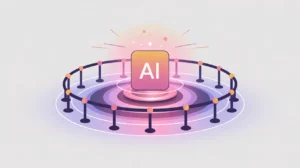Importance of Message Queues and Brokers
Message queues and brokers are middleware systems that enable asynchronous communication between software components. A message queue stores messages until the receiving system is ready to process them, while a broker manages delivery, routing, and persistence. Their importance today comes from the growing complexity of distributed systems, where services must communicate reliably without depending on real-time synchronization.
For social innovation and international development, message queues and brokers matter because mission-driven organizations often operate in unpredictable environments. Systems must handle unreliable connectivity, bursts of demand, and varied data flows. By decoupling senders and receivers, these tools ensure that critical information is not lost and services continue functioning even under strain.
Definition and Key Features
Message queues work by accepting messages from producers, storing them temporarily, and delivering them to consumers when they are ready. Brokers add intelligence, supporting routing, filtering, and priority handling. Popular technologies include RabbitMQ, Apache Kafka, and ActiveMQ. Each offers different trade-offs in performance, persistence, and scalability.
They are not the same as webhooks, which send notifications directly and immediately. Nor are they equivalent to API calls, which require synchronous responses. Message queues and brokers focus on durability and resilience, allowing systems to operate even when parts of the architecture are offline or delayed.
How this Works in Practice
In practice, queues and brokers support event-driven architectures and microservices by ensuring reliable communication between independent components. For example, a producer service can log transactions to a queue without waiting for downstream systems to process them. Consumers can then read from the queue at their own pace, enabling load smoothing and fault isolation.
Challenges include ensuring message ordering, handling duplicate deliveries, and managing scaling as volumes grow. Brokers like Kafka excel at high-throughput, distributed processing, while RabbitMQ is often used for smaller-scale but feature-rich messaging. Designing an effective messaging layer requires balancing performance, reliability, and simplicity.
Implications for Social Innovators
Message queues and brokers are invaluable in mission-driven contexts. Health systems can queue patient test results for analysis, ensuring no data is lost during outages. Education platforms can use brokers to manage real-time activity streams from classrooms, decoupling collection from processing. Humanitarian organizations can rely on message queues to coordinate crisis response updates, handling high volumes of incoming data from the field without overwhelming central systems.
By ensuring reliable, asynchronous communication, message queues and brokers give organizations the resilience needed to operate in complex and resource-constrained environments.







